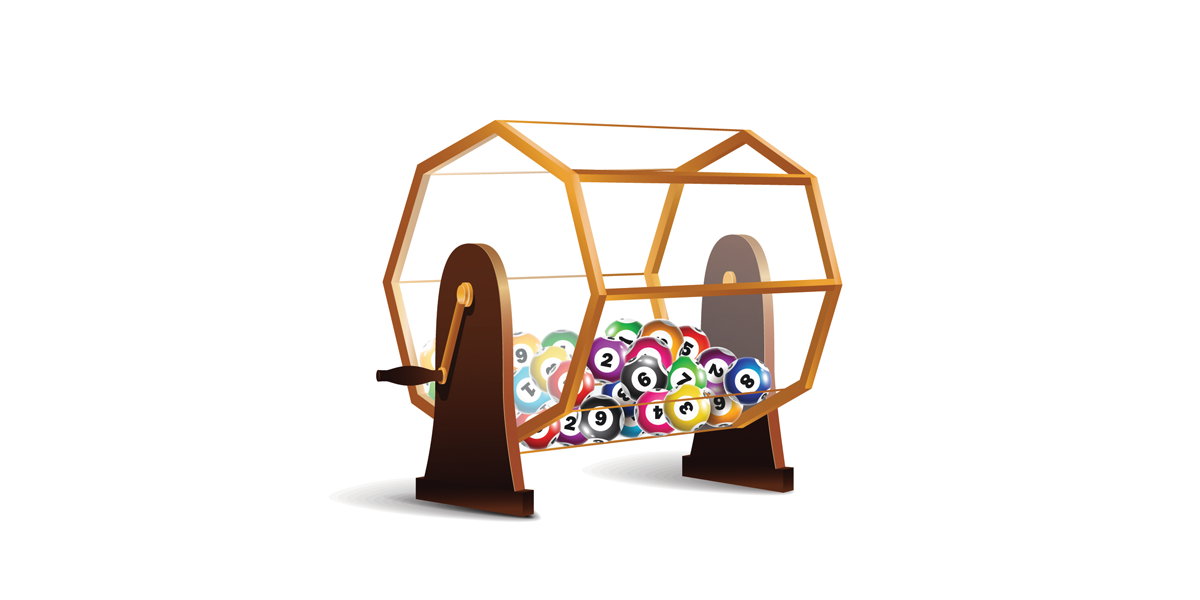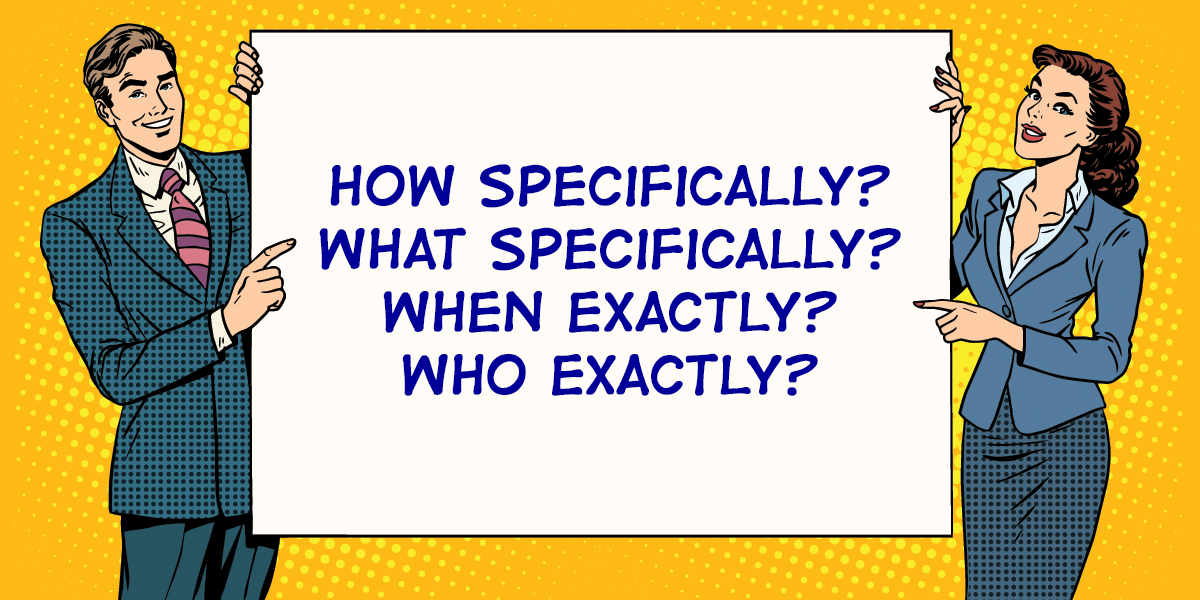Four Foundations For Powerful Persuasion
Despite all the weirdly named NLP seminars and books out there, there are really only four core skills from NLP that you need to learn. Sure there are advanced skills, but if you learn and practice (practice being the key word) you’ll make more money and get more sex and enjoy better relationships. In fact, if all you did was read this post, make a point to practice the four skills outlined herein, you would be more skilled in NLP than even some of the most famous trainers.
How Is This Possible?

In order to understand why there’s really only four basic skills you really need to be much more persuasive, we’ll need to take a couple of detours. The first one is to understand that the market place for NLP is like the market place for any self development products. And this market place is very unique in its structure.
Common Product Market
Take any product or service, and the market works more or less the same way. Take the shoe market for example. Or the cheeseburger market. Think of any product or service that is sold, and is under ten grand. Got one in mind? Good, use that.
Suppose you went shopping for that particular product. How would you know the difference between a good one, and a bad one? Meaning a product that as well worth the money, and a product that was not worth the money? Meaning how, exactly, would you know (not how you’d find out) but how would you know, if you had two products in front of you, which was good, and which wasn’t?
Retail Example

Let’s say you bought a cheeseburger for six dollars. You would, within one or two bites, know whether you got your money’s worth. (The proof is in the pudding). If you were trying on a pair of shoes, they’d let you try them on in the store. You’d wear them around, see how they looked in the mirror, and decide on the spot if they really were worth the asking price.
Most Products Are As Advertised
When you want to buy a pair of shoes, you know exactly what these shoes will do. They will keep your feet dry, give you the support you need, and make you look good. There’s no question about that. How much do people get paid in shoe stores? Not much. This is because nobody buys a shoe because of the “shoe buying process.” They buy the shoe because of the shoe.
Deceptively Clever Marketing

One of the most eye opening documentaries I saw was way back when I was in high school. The marketing director for a state lottery was being interviewed. She explained that when they create the commercials to get people to buy lottery tickets, that’s not what they are selling. Meaning when you buy a lottery ticket, you are technically getting a one in however many million chance of winning a bunch of money. But because it is a life changing amount money, this clever director understood what they were really buying, even if the customers didn’t. (They say lotteries are a tax on those bad at math…)
Lottery Buying Experience
What happens when people buy a lottery ticket? They get to imagine what would happen if they won. They are holding something concrete in their hands (well, paper, not really concrete lol) that allows them to fantasize about actually getting rich. Sure, we can fantasize about finding money on the street, but that’s PURE fantasy. Holding an actual ticket with actual numbers actually FEELS like we might have a shot at winning.
Mathematical Example
But what’s the difference between a zero chance of winning, and a 1/20,000,000 chance of winning? One is zero, and one is so close to zero that if you calculated it on a normal device with eight number spaces, it would show zero. From a purely statistical standpoint, the difference between fantasizing about money falling out of the sky, and fantasizing about winning the lottery is zero. In real world terms, they both have the same chances of happening, which is nothing.
Selling The Chance To Dream

The people that make the lottery commercials know this. They don’t make commercials about the actual odds. If you go to Vegas, they DO advertise the actual odds. That is a legitimate selling point to get you to choose Casino X over Casino Y. But when it comes to selling lottery tickets, they are selling dreams. They are selling the experience. They are selling the ability to have a legitimate belief that a future could happen, even though the chances of it happening are close to zero.
Self Help Promises
Consider that most self help books are based on the same marketing strategy. People read them, and read the amazing stories (real or metaphorical) of the people who have been successful with the techniques. They imagine they themselves could be successful. People don’t go to self help seminars (of any kind: money, communication, seduction) because they intend to actually use the techniques. They go there because of the experience. Of legitimately imaging that they actually can make money or have sex with porn stars or become real estate super heroes.
Very Vague Border
This is not to say that all seminar teachers are con artists, and all seminar students are idiots (I’ve spent well over 10K on seminars myself!). Every single person sitting in a seminar chair actually has a strong intention on actually using the techniques. Nobody is sitting there thinking, “Wow, this is a great experience for 10K!” Most of the folks who teach self help seminars aren’t consciously using the same marketing strategy as the lottery marketing lady.
Product Test Idea
Remember our cheeseburger? You knew if it worked when you bit into it? And the shoes, you knew before you bought them whether they were worth the money? Consider a typical self help seminar. How would you actually know it if worked, beyond the pleasure and excitement of the experience? You would have to go out into the world, alter your behavior (in whatever technique the seminar taught) and see if they worked.
Time Lag Self Deception

We humans are really good at deceiving ourselves. It’s what we do best. So what typically happens is when the typical seminar student is sitting in the seminar seat, he is maybe 10%, “This is a great experience,” and 90%, “I am so going to get rich using these ideas!” But as time goes on, and he or she faces the real difficulty that comes with changing ones behavior, especially when it comes to changing how we interact with others in order to get money or sex (two of our biggest desires and biggest sources of fear), what do you think happens?
In the seminar room, it’s easy to imagine you are going to actually use the techniques. But the further away from the seminar you get (in time) the more you realize how hard it is. It’s easy walking across hot coals (which technically isn’t dangerous so long as you keep moving) when everybody is cheering. It’s easy to break through your fears and sing up on stage when everybody is telling you how awesome you are. But selling to somebody who’s not sure they want to buy, when you are all alone, is hard! Walking across a room filled with strangers (and not a bunch of guys from the same PUA seminar) to talk to a cute girl is hard!
So as the student slowly moves away in time, that percent (of seminar value = great experience) slowly increases from ten percent. And the percentage (of seminar value = useful techniques) moves down from ninety percent.
Cognitive Dissonance Always Wins
Nobody would ever spend a few grand on a seminar and then admit to their friends they got scammed and they lost their money. Especially if it were a make money or get laid seminar. Since these are the two areas of life where everybody has the most anxiety, hearing about somebody else’s failure to learn from an expensive seminar would be a welcome relief. Since nobody would admit this, they slowly convince themselves it was the seminar EXPERIENCE they were after the whole time.
Marketing Bonanza

This allows for clever creators of products to get away with murder. Well, not really, but they get to invent the craziest sounding ideas, knowing that nobody will ever likely practice them to see if they work or not. Now, most trainers aren’t doing this on purpose, they’re just doing whatever good business person should do. And that is to keep creating products so long as customers keep buying.
Mutual Unconscious Deception
You might see this as a weird overlap in deception. The trainers don’t really care, so long as they keep coming up with goofy ideas and they keep filling seminar seats, nobody really minds. The students, since they go through the same process (the 10-90 shift) they don’t mind either. There’s also the high likelihood of repeat students. All it takes for them is to convince themselves it was for the experience, and they are a customer for life.
Movies And Vacations

There is absolutely nothing wrong with any of this. Everybody can spend their money however they want. Rich guys spend tens of thousands of dollars on strippers to have a “girlfriend experience.” People go on expensive vacations to have an experience. We watch movies, go to concerts, and spend all of our time and money on social activities to have an experience. Self help seminars, even though they are sold as “self help” are really experiences that people enjoy and are worth the money.
Learning Skills Are Different
This is the good news. There are only four basic communication skills from NLP that you can use to make a shitton more money, and have much better relationships. None of them require seminars. But all of them are skills. And if they are treated like skills, (e.g. things you need to spend time and patience learning) you can use them effectively.
Skills Take Time
Nobody thinks about reading a book on music and expecting to learn how to play the piano. Nobody expects to watch a few videos on YouTube and learn martial arts. Consider communication skills to be just like learning to play an instrument, speak a foreign language, or learn a martial art.
Learning Skills Is Boring
Learning to become a skilled piano player is boring. But being able to sit down at a party and play a few songs off the top of your head is pretty cool. Learning martial arts is boring, and often painful, but not getting killed in a bar fight is pretty cool. Learning a foreign language takes time and is tedious, but going to a country where nobody speaks English and doing fine on your own is a pretty cool feeling.
Learning the following four skills will take time an effort. It won’t be an “enjoyable experience” worth ten grand. But if you do take the time to learn them, you’ll make a lot more money. Way more than ten grand.
Never Talk About Fight Club
One thing about learning NLP or hypnosis is you get a certificate. And one of the benefits of spending a shitton of money on a seminar is you get to brag to your friends about your certificate (I have mine proudly listed on my Linkedin profile…ahem) But just consider the idea of learning these skills, and never, ever telling anybody that you learned them or that you know them. Just use them. Let all the other goofs talk about them. You be the one that is using them to make a shitton of money and have tons of awesome experiences. When you use them without telling anybody, you’ll come across as extremely persuasive, attractive, and charismatic.
OK, OK, The Skills!
I know, a bit long in the tooth. But here we go. The four essential skills of NLP you can learn right now and start practicing today.
Spatial Anchors

These are the easiest to learn. Which is pretty dangerous, because even though they are easy to learn, (you’ll understand them completely by the time you finish reading this) they do take time to practice. They involve using your gestures in a specific way, rather than unconsciously like most people. And when you start to use your gestures consciously, you will feel weird. For this reason, most people never use them outside of the seminar room.
The Technique
An anchor is based on Pavlov and his dogs. He brought them food, and they salivated. He brought them food, rang a bell, and they salivated. He only rang the bell, and they salivated. He transferred the salivation response from the food to the bell. When using spatial anchors, it’s the same thing.
Good Side – Bad Side
Start to play around and choose one side to be “good” and the other side to be “bad.” Anything that will elicit a good feeling in somebody, say that and use your good anchor. Anything that will elicit a bad feeling in somebody, use that and use your “bad” gesture. Once you get into the habit of doing this, it will become automatic.
How To Use
Whenever you want to say something you WANT them to feel good about (buy my product, give me your phone number, buy me a bottle of champagne) say it while firing your good anchor. Whenever you say something you want them to have a bad feeling about (keep dating your boyfriend, shop around some more, vote for the opposite political party) use your bad gesture.
Use To Sniff Out Alleged NLP Experts
Many people claim to be super genius experts in NLP. But watch them speak, and pay close attention to how they use their gestures. Especially if there is any correlation to bad things and one particular gesture, and good things and another particular gesture. Very few people, even six figure professional communicators, do this with any skill. This means when you practice enough to use it regularly, you’ll have skills even million dollar speakers and world leaders don’t know about. Seriously.
Embedded Commands

These are equally easy, and will feel equally silly when you actually try them on others. Which is why nobody ever uses these, except people who use them normally. Like math teachers who really love to talk about math. When he or she is talking to their students, they will naturally use embedded commands when they say things they really want their students to do, and really believe will help them.
How To Build
A command is simply a volitional form of a verb, or a verb and a noun. The verb can be a single word verb, or a phrasal verb. Listed below are simple examples of simple commands.
Sit down
Eat bacon
Watch football
Buy my product
Have dinner with me
Study calculus
Practice Aikido
When using commands, there are a few general rules, or best practices. The shorter the better. “Sit down,” is much better than “Sit down next to the lady in the green jacket.” When saying commands, it’s best to use “command tonality.” The second part of the command has to be slightly lower in tone than the first word. It has to be “marked out,” meaning it has to sound slightly different than the rest of the sentence, but not so it’s obvious.
Most Important Embedded Command Rule
One command won’t do squat. How many? As many as you can. Also consider that you need to train your listener to be obedient to your commands. The objective is to get them to want to do whatever the commands “add up to.” It’s better to start with commands you’d like them to do, like make money, or something similar. Tell them to do things they would want to do normally, and then switch to neutral commands, and then switch to more command commands.
How To Use
Just like using spatial anchors, you can start using commands today. Spend a few weeks, or even a few months, using commands on things you’re pretty sure you know people will want to do anyway. Like make money, or go home early, or eat free pizza, or whatever comes to mind. Ideally, you want to be able to spit out commands without really thinking about it.
Bonus Points
Whenever possible, connect your commands to your good anchor. Just doing these two things will give you an incredibly amount of conversational power. Start using your good anchor whenever you say something good, or give a good command (one that people will want to do, like, “make money.”). Then when you need to give a “want them to do” command, you’ll have already trained them on your “command voice” and your good anchor. You’ll be miles ahead of even the most esoteric NLP trainers.
Meta Model

This is something that is almost always misused. But it is perhaps the most powerful technique from NLP. In most seminars, it’s only practiced a little bit, as most don’t see much use. All it really is, from a purely grammatical standpoint, is getting specific when vague information is presented. Here are some basic examples;
I ate chicken last night?
What kind of chicken specifically?
Normally, when people say vague things like, “eat chicken,” they are perfectly fine with it being left vague. Nobody wants to get into a twenty minute conversation on how specifically they cooked their chicken or how long specifically it took to eat it.
When To Use The Meta Model
This is definitely an art, and it will take practice. The problem with the meta model is if you misuse it, you’ll risk offending people. But if you misuse embedded commands or spatial anchors, you’ll just look like a weirdo. The trick is to only use the meta model when getting more specific information about something your conversation partner wants to do.
No Judgement Allowed

This has to be done from a purely open mindset. Now subtle judgement, or even the slightest hint of an impending lecture or anything other than purely positive appreciation energy. is allowed. Imagine for a minute, you are telling your best friend about your secret dreams of being an opera singer. You just bought a six hundred dollar home study course. You are actually feeling like you might someday perform in some local theater. Now let’s say you mention this to your friend, and they say:
“An opera singer? You? Jesus Christ that’s ridiculous. Hey! Everybody! Check out this guy, he wants to be an opera singer! Ha! Ha! Ha! Ha!”
Needless to say, you’d never share your opera dreams with anybody ever again. But you’ll have the same effect with just a hint of the above energy. When asking about their dreams, turn off your brain and your ego, and just listen. The last thing they want is your advice. The second they smell any impending advice or judgment or anything less than pure acceptance and appreciation of their dreams as perfectly valid, they’ll shut down.
Secret Treasure

This is everybody’s secret treasure. We all have dreams of the future. Of what we want, of what we think we deserve, of what we hope to become. If you can pull out that energy by asking carefully placed meta model questions, this will give you an incredible amount of leverage. Needless to say, this takes a lot of rapport, but if you can manage to get them talking about their future dreams, they will really like you.
If you sell things to people, building up their inner dreams will allow you to sell more things. If you are in a relationship, you can make your partner feel wonderful. If you are trying to build a relationship, this is the easiest and quickest way to do it.
Start Slowly
Always be careful of slipping into advice mode. This is hard, as all humans seem to be hard wired to give advice whenever the opportunity presents itself. Giving advice is the absolute last thing you want to do. The more you can open up their deep dreams and desires with very delicate meta model questions, the more this will work.
The Fourth Skill – Culmination Of Previous Three
Here’s how it works. You start talking with somebody. You’ve got some body language rapport (this happens naturally, so you really only need to check it once or twice). You’ve broken the ice and you are getting them talking about their future dreams and hopes with simple meta model questions. It could be why they are studying what they are studying. It could be their next vacation. Anything in the future that they want, and they are willing to talk about.
Step One – Expand Their Future
Talk about as many things as you can, about their future, as they will allow. No advice, not judgement, not scowling of the eyebrows. Just talk, appreciate, ask follow up questions. Go back and forth like a normal conversation, but allow yourself to become truly interested in what they are hoping to do or achieve.
Step Two – Look For Command Worthy Phrases
This is when you listen to what they are saying, and are honing in on any phrases that you can repeat back to them, as a command. For example:
“I want to go water skiing next week.”
“That sounds cool. When are you going to go water skiing, have you decided yet?”
Repeat back as many of these command worthy phrases as you can.
Step Three – Use Anchors With Command Phrases
Whenever you say back their own phrases, but in your command voice, use your good anchor. Do this as many times as you can. The more you do this, the stronger that anchor, and your command voice, will be.
Step Four – Leverage As You Wish
Once you’ve got them fired up about something they want, which you’ve attach to your anchor and your command voice, you can slowly start to steer the conversation wherever you want it, for whatever purposes you want. If you sell things, use your command voice and anchor when describing your product. If you’re warming them up to get a phone number, use your command voice and anchor when putting the request out there.
Build Them Up In As Many People As Possible

All you’ve got to do now is start practicing these. If you slowly practiced these techniques, and started using them with other people, everybody you talk to on a regular basis would have built in pleasure buttons you could use any time you wish. Any time you needed a favor, or a raise, or anything else, you’ve now got a much higher chance of getting.
Continuously Increasing Charisma
Even if you never added in your own commands, if all you did was elicit other people’s desires and feed them back to them with your command voice and your good anchor, everybody would love you. Because you will be covertly linking their deepest wants and needs to you. When they think about their vacation next week, they’ll also think about you. When they think about their dreams of becoming a singer on TV, they’ll think of you. These four powerful NLP techniques will make everybody you know think of you in the best way possible. All you’ve got to do now is start practicing. So practice!
Further Study

Mind Persuasion has plenty of books and courses to further the power of your communication. Everything you’ll ever need on inner and outer game for any reason, we’ve got your back.
Mind Persuasion Courses
Mind Persuasion Books